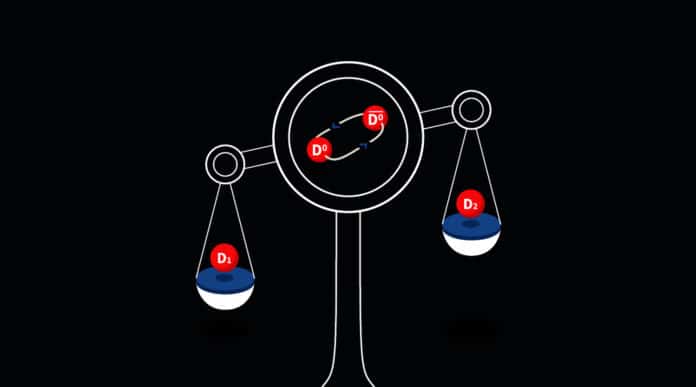In particle physics, Mesons are a family of subatomic particles composed of a quark and an antiquark. The D0 meson is one of only four particles in the Standard Model of particle physics. It consists of a charm quark and an up antiquark, while its antiparticle, the anti-D0, consists of a charm antiquark and an up quark.
In the world of quantum physics, the D0 particle can be itself and its antiparticle at once. This phenomenon, referred to as quantum superposition, results in two particles, each with their mass – a lighter and a heavier D meson. This superposition also prompts D0 to oscillate into its antiparticle and back.
The collision between proton-proton at the Large Hadron Collider (LHC) forms D0 particles that travel few millimeters before transforming, or “decaying,” into other particles.
The LHCb collaboration compared the D0 particles that decay after traveling a short distance with those traveling a little further. They did this to quantify the difference in mass between the heavier and lighter D particles.
They found that the difference between two particles of 0.00000000000000000000000000000000000001 grams – or, in scientific notation, 10-38 g. This value crosses the “five sigmas” level of statistical significance required to claim an observation in particle physics.
According to the team, such a tiny mass difference can lead to a new phase of particle exploration.
LHCb spokesperson Chris Parkes said, “To put this incredibly small mass difference in context, it is still a small number even when compared with the mass of the D0 particle – the same as the mass of a snowball compared to the mass of the entire Mont Blanc, the highest peak in Europe, standing at over 4800 meters. And it’s a big step in the study of the oscillatory behavior of the D0 particles.”
“Such new particles could increase the average speed of the oscillation or the difference between the speed of the matter-to-antimatter oscillation and that of the antimatter-to-matter oscillation. If observed, such a difference could shed light on why the universe is made up entirely of matter, even though matter and antimatter should have been created in equal amounts during the Big Bang.”
Journal Reference:
- LHCb collaboration: R. Aaij, C. Abellán Beteta et al. Observation of the mass difference between neutral charm-meson eigenstates. arXiv:2106.03744
